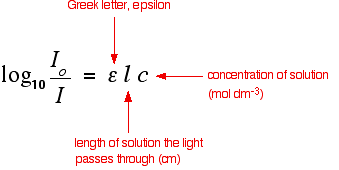As it stands now the observation is a warming planet. the theories are as follows,
1. that humankinds fossil fuel emissions have produced CO2 forcing the planet to warm
and
2. The warming of the planet is predominantly due to natural variation
Now IF you've been paying attention it becomes clear that the theory of CO2 warming the planet can NEVER be verified. We cannot pump or regulate CO2 levels with enough control to test the theory. Therefore any proposals, beliefs or assertions no matter how loudly they are spoken or derisively they are spat are anymore valid than the other sides opinion. By the same token the idea that warming is predominantly due to natural variation can also NEVER be proven. At least not until we obtain a time machine. But scientists are more like engineers than mathematicians so it is our goal to get as close as reasonably possible to an actual result.
So how does each side approximate a solution? well lets begin with the more scientifically and politically popular version. The idea of carbon dioxide inducing warming is not unfounded. It is based on a theory known as the greenhouse gas theory which in turn is based on the absorption of light. This is a known demonstrable phenomenon and can be calculated using the Beer-Lambert equation. In fact this is so reliable we can use this phenomenon to determine concentrations of various chemicals in solutions.
with an explanatory diagram
Most people don't speak math but rearranging the equations lets you see that a unit increase in the concentration increases the amount of light absorbed ten fold. A big thumbs up for the theory. But there's a problem CO2 has an extremely narrow absorption spectrum and that falls out of the range of the incoming radiation to the planet.as such effectively all the incoming radiation in that spectral range is absorbed but there isn't much there. But it does fall well within the the spectrum of the outgoing radiation from the earth. a fairly helpful picture.
So there you have it CO2 has some absorption within the normal radiative remission from the earth. That;s an excellent argument and it has solid science and research behind it. Thats where the good science ends and the things start to get fuzzy. See temperature is a function of the energy in a system. It is a function of how much energy is coming and how much energy is leaving. When there is more energy coming in then there is going out the temperature rises, The opposite means the temperature falls, If the system is in equilibrium the temperature is constant. As the radiative energy is absorbed by the CO2 it is passed on to other molecules through collision and is eventually radiated into space.
A traditional energy balance looks like :
Accumulation=in-out+generation-consumption
While we can calculate the incoming energy from the sun. It is much more difficult to estimate the energy going out, especially when were trying to estimate the effect of reabsorption. Even if energy is reabsorbed it will still be reemitted, not just some of it all of it. Energy is a loosely defined term so think of it like a fish tank with a hose connected and a hole drilled through the side. You can think of reabsorption as the expansion or change in the fish tank volume. there are two ways the tank volume can change it can grow wider or it can grow taller. If the tank grows taller the water level wont change and volume of water will remain the same. if the tank expands horizontally the height of the water wont change but the volume of water will.
As it stands now we don't know the dimensions of the tank, The volume of water or the flow rate out of the hole, or how the parameters are changing. We are trying to figure those dimensions out but the truth is all we can offer now are estimates. We call these estimate climate sensitivity and there is an incredible amount of debate as to how significant or large the values are. The idea is to reduce the very complex problem of our input/output values to a single value depicting the effect of carbon dioxide on temperature.
Guesstimating these numbers isn't on the table and they aren't simply based on CO2 absorption values. climate temperature is not a single factor there are multiple things that feed into and affect temperature variability. Factors such as cloud cover, or glacier coverage are going to depend on temperature and they in turn are going to affect temperature. These provide what are called feedback effects where an individual variable which is affected by temperature also affects temperature. Some of these factors will increase the climate sensitivity others will decrease climate sensitivity. Much of these estimates and factors are pulled from published literature. Once collected these factors are collected and used in a series of equations attempting to determine the actual course of climate in what we know as climate models.
But once you develop a model how do you test it? Well the easiest answer is look to previous years of temperature data. Assuming that we have a reasonably accurate mathematical interpretation then we should have a relative match with previous temperature records. Then using future projections to simulate some of the variables which are unknowns the model should reasonably predict temperature increases into the future.
Now I feel I have been fair to the believers of AGW. The predictions and methodology currently used is similar to what I'd pursue if I was attempting to answer the questions of significance around climate change. It is intelligent and methodical but this is where the science behind the theory of AGW takes a backseat and the skeptics argument begins.



No comments:
Post a Comment